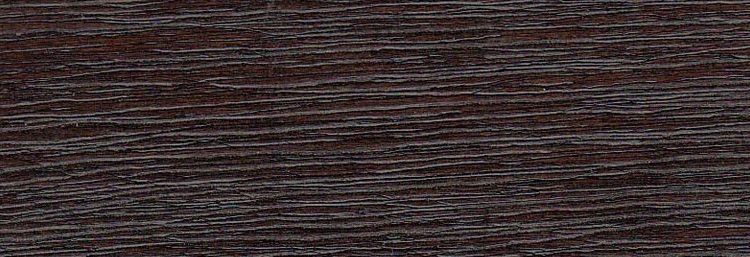Il legno di wenge
The wenge wood
- 25 Giu 2023

Il legno di wenge (Millettia laurentii) è un legno duro della famiglia delle Leguminosae ed è noto anche come palissandre du Congo (Repubblica Popolare del Congo), dikela, mibotu, bokonge e tshikalakala (Repubblica Democratica del Congo), awong (Camerun) e nson-so (Gabon). Una specie affine, Millettia stuhlmannii, produce un legno comunemente chiamato ponga-ponga in Mozambico. Gli alberi raggiungono 18 m di altezza e 0,6 m di diametro.
L’alburno è biancastro e ben distinguibile dal durame di colore marrone scuro e caratterizzato da fitte venature nere e bande alternate di tessuto parenchimatico chiaro e scuro che producono una figura molto decorativa. La fibratura è dritta e la tessitura irregolare e grossolana.
La densità del legno di wenge varia da 830 a 1000 kg/mc, mentre quella del legno di panga-panga è di 800 kg/mc. Entrambi si essiccano abbastanza lentamente e con minimo degrado, anche se il processo richiede un’attenzione particolare per evitare il rischio di fessurazione superficiale. Il legno è stabile in opera, presenta un’elevata resistenza a flessione e a impatto, una media rigidezza, un’elevata resistenza all’abrasione e una scarsa propensione alla sagomatura in presenza di vapore. È facilmente lavorabile sia a mano sia a macchina se i taglienti sono mantenuti molto affilati. L’inchiodatura richiede l’esecuzione di pre-fori. Durante l’incollaggio e la lucidatura la presenza di cellule resinifere può costituire un problema ma l’impregnazione delle fibre permette comunque di ottenere buone finiture. Il legno è durevole ed estremamente resistente ai trattamenti di conservazione.
Il legno di wenge ha una naturale resistenza all’abrasione che lo rende eccellente per pavimentazioni di edifici pubblici o a elevato traffico pedonale. Il colore marrone cioccolata scuro può ben adattarsi anche ai pavimenti di certi tipi di hotel, showroom e sale conferenze. Viene usato in tutte le forme di falegnameria da interni e da esterni e per costruzioni in generale. È un buon legno da tornitura ed è ottimo per sculture. Tronchi selezionati vengono tranciati per produrre piallacci decorativi destinati a mobiletti e pannelli.
Fonti
“Atlante del Legno” – Aidan Walker – Ed. HOEPLI
 Arch. Anselmo Santilli – ZEDPROGETTI srl
Arch. Anselmo Santilli – ZEDPROGETTI srl
Wenge wood (Millettia laurentii) is a hardwood of the Leguminosae family and is also known as palissandre du Congo (People’s Republic of Congo), dikela, mibotu, bokonge and tshikalakala (Democratic Republic of Congo), awong (Cameroon) and nson-so (Gabon). A related species, Millettia stuhlmannii, produces a wood commonly called ponga-ponga in Mozambique. The trees reach 18 m in height and 0.6 m in diameter.
The sapwood is whitish and well distinguishable from the dark brown heartwood and characterized by thick black veins and alternating bands of light and dark parenchymal tissue that produce a very decorative figure. The grain is straight and the texture is irregular and coarse.
The density of wenge wood varies from 830 to 1000 kg/m3, while that of panga-panga wood is 800 kg/m3. Both dry quite slowly and with minimum degradation, even if the process requires special attention to avoid the risk of surface cracking. The wood is stable on site, has a high resistance to bending and impact, medium stiffness, high resistance to abrasion and a low propensity to shape in the presence of steam. It can be easily machined by hand or by machine if the cutting edges are kept very sharp. Nailing requires pre-holes. During gluing and polishing, the presence of resin cells can be a problem, but impregnation of the fibres allows good finishes to be obtained. The wood is durable and extremely resistant to conservation treatments.
Wenge wood has a natural resistance to abrasion that makes it excellent for floors of public buildings or high pedestrian traffic. The dark chocolate brown colour can also be used on the floors of certain types of hotels, showrooms and conference rooms. It is used in all forms of interior and exterior joinery and for construction in general. It is a good turning wood and is great for carving. Selected logs are cut to produce decorative veneers for furniture and panels.

